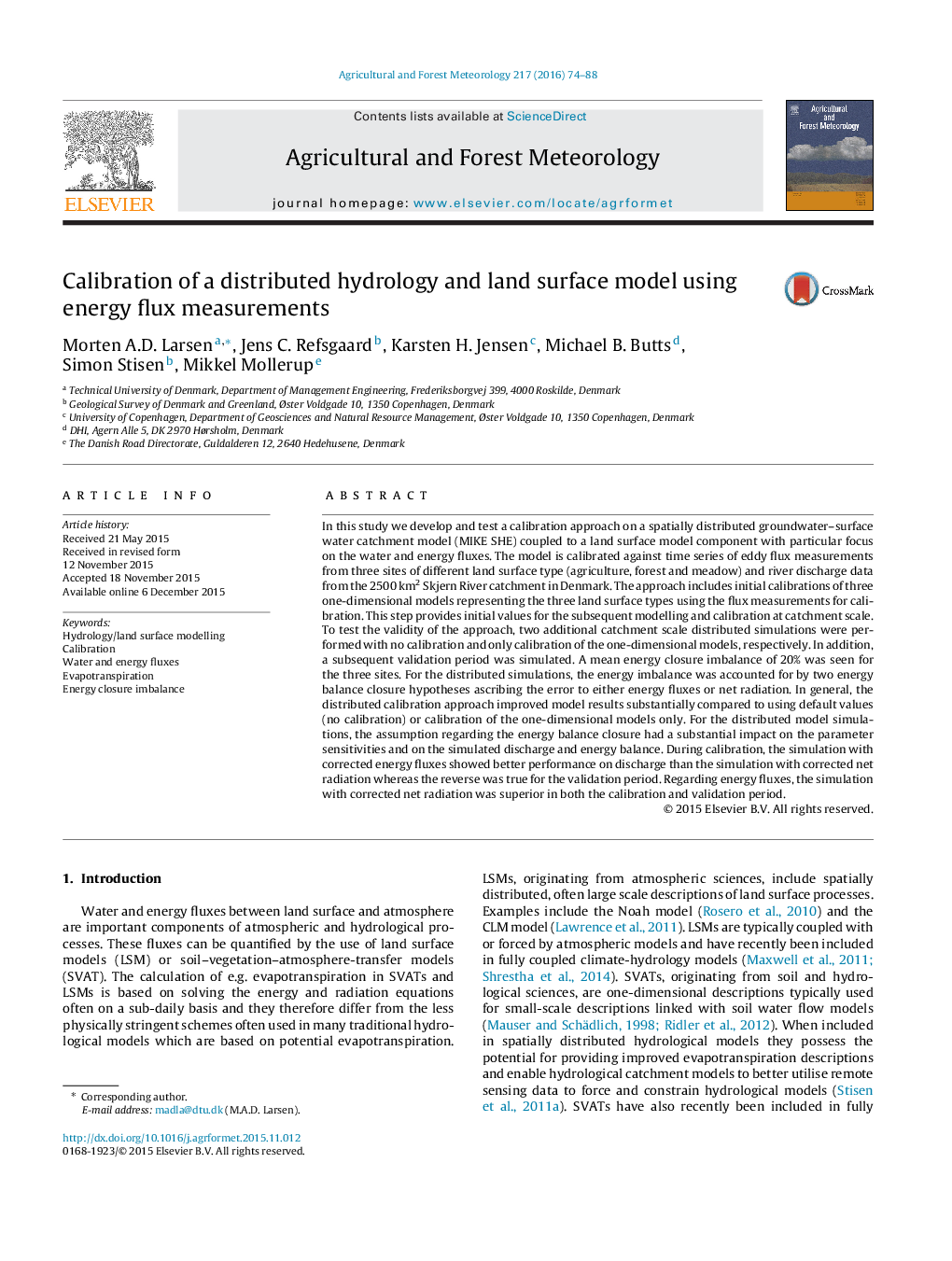| کد مقاله | کد نشریه | سال انتشار | مقاله انگلیسی | نسخه تمام متن |
|---|---|---|---|---|
| 81393 | 158314 | 2016 | 15 صفحه PDF | دانلود رایگان |
• A new hydrology model calibration approach solving the energy equation is proposed.
• Initial 1D calibration is performed on three representative flux tower sites.
• LE + H + G were 20% below Rn requiring two hypotheses on the erroneous component.
• The approach was skilful – validated against runs with fewer calibration steps.
• The hypothesis ascribing Rn error was superior over the LE + H + G error hypothesis.
In this study we develop and test a calibration approach on a spatially distributed groundwater–surface water catchment model (MIKE SHE) coupled to a land surface model component with particular focus on the water and energy fluxes. The model is calibrated against time series of eddy flux measurements from three sites of different land surface type (agriculture, forest and meadow) and river discharge data from the 2500 km2 Skjern River catchment in Denmark. The approach includes initial calibrations of three one-dimensional models representing the three land surface types using the flux measurements for calibration. This step provides initial values for the subsequent modelling and calibration at catchment scale. To test the validity of the approach, two additional catchment scale distributed simulations were performed with no calibration and only calibration of the one-dimensional models, respectively. In addition, a subsequent validation period was simulated. A mean energy closure imbalance of 20% was seen for the three sites. For the distributed simulations, the energy imbalance was accounted for by two energy balance closure hypotheses ascribing the error to either energy fluxes or net radiation. In general, the distributed calibration approach improved model results substantially compared to using default values (no calibration) or calibration of the one-dimensional models only. For the distributed model simulations, the assumption regarding the energy balance closure had a substantial impact on the parameter sensitivities and on the simulated discharge and energy balance. During calibration, the simulation with corrected energy fluxes showed better performance on discharge than the simulation with corrected net radiation whereas the reverse was true for the validation period. Regarding energy fluxes, the simulation with corrected net radiation was superior in both the calibration and validation period.
Journal: Agricultural and Forest Meteorology - Volume 217, 15 February 2016, Pages 74–88
